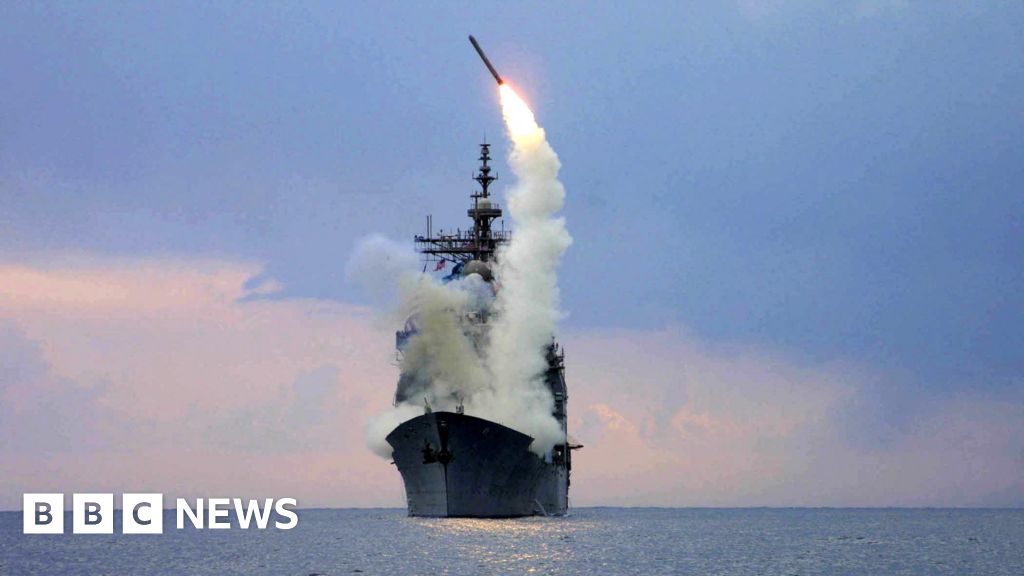*Estimate based on contract expiry and government plans to nationalise every three months. Operator route maps are approximate
The majority of Great Britain’s major rail operators are now in public ownership, as the Labour government continues its efforts to make the railways “more reliable, affordable and accessible”.
The nationalisation of Greater Anglia on 12 October represents the ninth major passenger service to be brought back into public ownership, leaving seven to go before the government’s deadline of completing every operator by 2027.
The rollout, which is resulting in an operator being nationalised roughly every three months, is gradually bringing an end to a privatised system that critics argue has been overly fragmented and focused on profit, to the detriment of passenger experience.
Several operators were already under public ownership by the time Labour were elected in 2024, having been nationalised by the Conservatives over financial woes and poor performance.
Meanwhile, Transport for Wales and ScotRail were each nationalised by the Welsh and Scottish devolved governments, in 2021 and 2022 respectively.
However, under the current transport secretary, Heidi Alexander, the Department for Transport (DfT) has accelerated the pace of nationalisation, bringing three operators on to the public books since May: South Western Railway, C2C and Greater Anglia.
State of play, October 2025
So far nine of the 16 major rail operators in Britain are now in public ownership:
Tap an operator to highlight routes, tap again to deselect
The government has said the remaining seven will be nationalised by October 2027:
The operator that was nationalised most recently was Greater Anglia, which took place on 12 October 2025.
The next operator set to be nationalised is West Midlands Trains, which the government says will take place in February 2026.
The nationalisations come ahead of the establishment of a new state-controlled company called Great British Railways, expected next year, which will manage rail infrastructure and services.
It has been described by the DfT as a “single directing mind” for “bringing track and train together, putting passengers and customers first, [and] rebuilding trust in the railway”.
It will soon manage most of the publicly owned operators in Great Britain, combining them with Network Rail, which owns the tracks, signals and big stations.
However, Great Britain’s trains will remain privately owned.
Industry insiders have expressed cautious optimism about Labour’s plans, highlighting the potential for Great British Railways to achieve more coordination and, in turn, greater efficiency.
However, experts have also warned that nationalisation alone may not be enough to fix all of Britain’s problems with rail, given ballooning costs.
“Irrespective of the ownership changes, the government’s got a major headache with the fact that rail is gobbling up so much public subsidy, and that’s before you get to HS2,” said Stephen Glaister, the emeritus professor of transport and infrastructure at Imperial College London and a former chair of the Office of Rail and Road.
“The government are making promises to make fares even cheaper and services even better, but both will cost more public money.”
The data available on nationalised operators so far offers a mixed picture on performance.
Several have experienced improving train punctuality and a reduction in cancellations but the performance of others has worsened over the past year.
LNER has been one of the most improved – and in June the rail minister, Peter Hendy, described the operator as a “blueprint” for wider renationalisation efforts.
Guardian graphic. Source: delay and cancellation data taken from the Office of Rail and Road. *Note: South Western Railway, C2C and Greater Anglia were nationalised by the Labour government in the latter half of the time period analysed here
When will the next operators be nationalised?
Labour committed to bringing rail into public ownership in the party’s 2024 election manifesto – claiming it had come up with a way to nationalise trains “without costing taxpayers a penny in compensation”.
Instead of an “all-at-once” approach, nationalising every operator simultaneously and paying off shareholders, the government is running down the clock on existing rail contracts.
The DfT is waiting for each operator’s core contract expiry date, which allows the government to take over without compensating the private companies.
The final operator to expire in this way will be CrossCountry in October 2027 – and this is when the government says it will have completed rail nationalisation in Great Britain.
Until then, the government has set a pace of nationalising one operator in each annual quarter. West Midlands Railway is due next, in February 2026.
Labour’s current one-at-a-time approach builds off of the work of its predecessors in government. Several operators – including LNER, Northern and Southeastern – were brought into public ownership by the Conservatives from 2018 onwards.
In those cases, nationalisation was taken as an emergency measure rather than a deliberate policy – in response to financial difficulties, in the case of LNER, or because of dismal performance, in the case of Northern.
Additionally, ScotRail and Transport for Wales were brought into public ownership by their respective devolved governments, and their train operations are not expected to be merged into Great British Railways.
Labour’s strategy for the remaining operators is driven by legal reality – which experts say could be helpful given how fragmented rail in Great Britain has become.
“You can’t do it in one go,” said Marcus Mayers, the managing director of the Rail and Station Innovation Company. “If you try to merge 22 companies in one go – you don’t have the ability to build the system, to join it together that quickly.
“So you build an operation which is capable of ingesting organisations, and is capable of ingesting organisations at the rate of one every three months. That makes sense.”
Will nationalisation improve the railways?
The prime minister, Keir Starmer, has previously said his government would not be nationalising rail out of ideology but because of what it could deliver for passengers.
“We’ve tried privatisation for two or three decades and it’s a complete mess,” the Labour leader said in April 2024. “Everybody who travels on the trains has been affected by the cancellations and delay.”
Privatisation was undertaken by the Conservatives in the 1990s, after decades of falling ridership under the nationalised British Rail.
From 1948 onwards the annual number of journeys on Britain’s rail network fell consistently, from a peak of more than 1 billion a year in 1950 to a low of 0.6 billion in 1982.
After privatisation, rail journeys recovered significantly, reaching a new peak of 1.7 billion by 2017.
“Privatisation sparked a railway renaissance,” said Patrick McLoughlin, the transport secretary under David Cameron, in a speech in 2013.
However, the impact on other aspects of train travel has been more mixed.
One of the original selling points of privatisation was that competition for franchises would bring better value for the taxpayer.
While the industry remained subsidised overall, some major commuter franchises went on to pay a return.
Yet in the past few years, after huge falls in passenger numbers during the coronavirus pandemic, the amount the government pays to operators in public subsidy has ballooned to record levels.
“The government is still forking out £12bn on operational subsidy, plus HS2 is another £7bn, plus extracurricular investment projects on the existing railways,” Glaister said.
“That’s a very great deal of money in the context of the public expenditure crisis.”
Costs have risen for passengers, too. Rail fares have become less affordable since privatisation, rising faster than average earnings in the same period.
Today it costs about £8.90 to take a 50km (31-mile) journey by rail, based on how much revenue rail operators collect for each kilometre travelled on their network.
When adjusting for inflation, that same journey would have cost £7.54 in 1994.
The rising cost of rail comes amid widespread dissatisfaction with the reliability of Great Britain’s trains.
Last year was the worst year for cancellations nationally since 2015, according to statistics produced by the Office of Rail and Road.
Labour has pledged to improve reliability and affordability with nationalisation, banking on a unified Great British Railways to end what critics see as an overly fragmented system.
“It’s possible, because there’s efficiencies of integration of track and train, which might mean that problems get solved more quickly,” Mayers said.
“You may be taking out the commercial imperative to drive reliability, but you’ve also got more collaboration about how to achieve it. So it’s a fine balance, and whether it will work or not is still open for debate.”
Others are sceptical of how much more efficiency can be wrung out of the system.
“Governments frequently say: ‘Oh, we’ll make the railways more efficient, we’ll buy lots of new equipment, we’ll employ less people to do the work,’” Glaister said.
“But the industry has been trying to do that for years and years, and the regulators screw that down to the absolute bottom in their settlements. And I don’t think there’s a lot of, as it were, undiscovered efficiencies to go for.”
A DfT spokesperson said: “Through public ownership and the creation of Great British Railways, the government is fundamentally reforming how our railways are run, putting passengers first.
“Public ownership will deliver a railway that is more accountable, efficient, and reliable – resulting in greater opportunities for communities and significant growth.
“It is not a silver bullet, and issues inherited from private sector ownership will take time to root out, but we expect public sector operators – and Great British Railways once it is established – to focus relentlessly on improving reliability, punctuality and other aspects of the service that matter most to passengers, and we will hold them to account for doing so.”
.png)
 22 hours ago
18
22 hours ago
18








 English (US) ·
English (US) ·